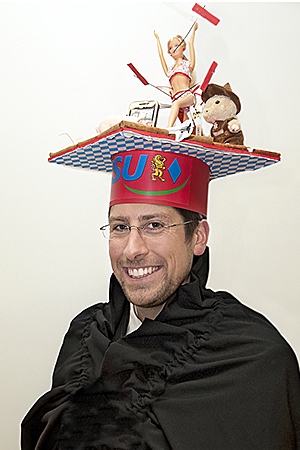Kurt Höller
Novel Techniques for Spatial Orientation in Natural Orifice Translumenal Endoscopic Surgery (NOTES)
Abstract
With a novel approach abdominal surgery can be performed without skin incisions. The natural orifices provide the entry point with a following incision in stomach, colon, vagina or bladder. “Natural Orifice Translumenal Endoscopic Surgery” (NOTES) is assumed to offer significant benefits to patients such as less pain and reduced traumata as well as reduced collateral damages, faster recovery, and better cosmesis. Particular improvement can be reached even for obesity and burn injury patients and children. But the potential advantages of this new technology can only be exploited through safe and standardized operation methods. Several barriers identified for the clinical practicability in flexible intra-abdominal endoscopy can be solved with computer-assisted surgical systems. In order to assist the surgeon during the intervention and to enhance his visual perception, some of these systems are able to additionally provide 3-D information of the intervention site, for others 3-D information is even mandatory.
In this context, the question whether on-line 3-D information can be obtained in real-time had to be answered. One approach in this work to face this challenge is the acquisition of 3-D information directly via the endoscope with a hybrid imaging system. Parallel to the CCD camera a Time-of-Flight (ToF) system is integrated. ToF cameras illuminate the scene actively with an optical reference signal with intensity modulation. For each ToF pixel a distance value depending on the modulation phase shift of the reflected optical wave and the electrical reference signal is estimated. To compensate the high optical attenuation of endoscopic systems, a much more efficient illumination unit with laser diodes was designed. The 3-D depth information obtained by this “MuSToF endoscope” can furthermore be registered with preoperative acquired 3-D volumetric datasets like CT or MRI. These enhanced or augmented 3-D data volumes could then be used to find the transgastric, transcolonic, transvaginal, transurethral or transvesical entry point to the abdomen. Furthermore, such acquired endoscopic depth data can be used to provide better orientation within the abdomen. Moreover, it can also be used to prevent intra-operative collisions and provide an optimized field of view with the possibility for off-axis viewing.
Furthermore, providing a stable horizon on video-endoscopic images especially within non-rigid endoscopic surgery scenarios (particularly within NOTES) is still an open issue. Hence, this work’s “ENDOrientation” approach for automated image orientation recti_cation contributes to a great extent to advance the clinical establishment of NOTES. It works with a tiny MEMS tri-axial inertial sensor that is placed on the distal tip of an endoscope. By measuring the impact of gravity on each of the three orthogonal axes and filtering the data using several subsequent algorithms the rotation angle can be estimated out of these three acceleration values. The result can be used to automatically rectify the endoscopic images using image processing methods. The achievable repetition rate is above the usual endoscopic video frame rate of 30Hz, accuracy is about one degree. The image rotation is performed by rotating digitally a capture of the endoscopic analog video signal, which can be realized in real-time. Improvements and benefits have been evaluated in animal studies: Coordination of different instruments and estimation of tissue behavior regarding gravity related deformation and movement was considered to be much more intuitive having a stable horizon within endoscopic images.
Having additional 3-D data or a fixed horizon will not be an unalterable precondition for performing NOTES. But it will help to utilize robotic devices and to support surgeons, who are novices in the field of flexible endoscopy. Since gastroenterologists and surgeons are still not absolutely familiar with the NOTES approach, they will benefit from new technologies and appreciate them.
